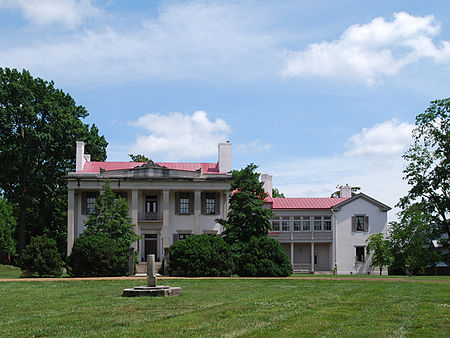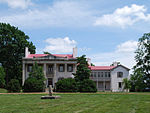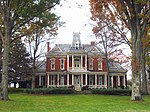Belle Meade Plantation

Belle Meade Historic Site and Winery, located in Belle Meade, Tennessee, is a historic house that is now operated as an attraction, museum, winery, and onsite restaurant together with outbuildings on its 30 acres of property. In the mid 19th century, the plantation encompassed roughly 5,400 acres with over a hundred enslaved persons. A Winery and Visitors' Center have been constructed on the property. Preserved original outbuildings, including the original Harding Cabin where Belle Meade began, a dairy, a gardener's house, a carriage and stable house built in 1892, one of the largest smokehouses in Tennessee, and a mausoleum may also be seen. Since the 1990s, the executive leadership of the site began an effort to reconcile the past and to tell the stories of African Americans who were brought to and born at Belle Meade and worked there before and after emancipation. By 2018, this emphasis resulted in developing two tours through which the story of Belle Meade is told. The Mansion Tour tells the century-long history of Belle Meade through the stories and experiences of the Harding and Jackson families, as well as the enslaved women, men, and children who were held in bondage here. The Journey to Jubilee Tour invites discussion and explores the stories of the enslaved African-Americans who were brought to, and born at Belle Meade from 1807 through the years following Emancipation.
Excerpt from the Wikipedia article Belle Meade Plantation (License: CC BY-SA 3.0, Authors, Images).Belle Meade Plantation
Harding Pike, Nashville-Davidson
Geographical coordinates (GPS) Address Website External links Nearby Places Show on map
Geographical coordinates (GPS)
| Latitude | Longitude |
|---|---|
| N 36.105555555556 ° | E -86.865 ° |
Address
Belle Meade Plantation
Harding Pike 5025
37205 Nashville-Davidson
Tennessee, United States
Open on Google Maps








